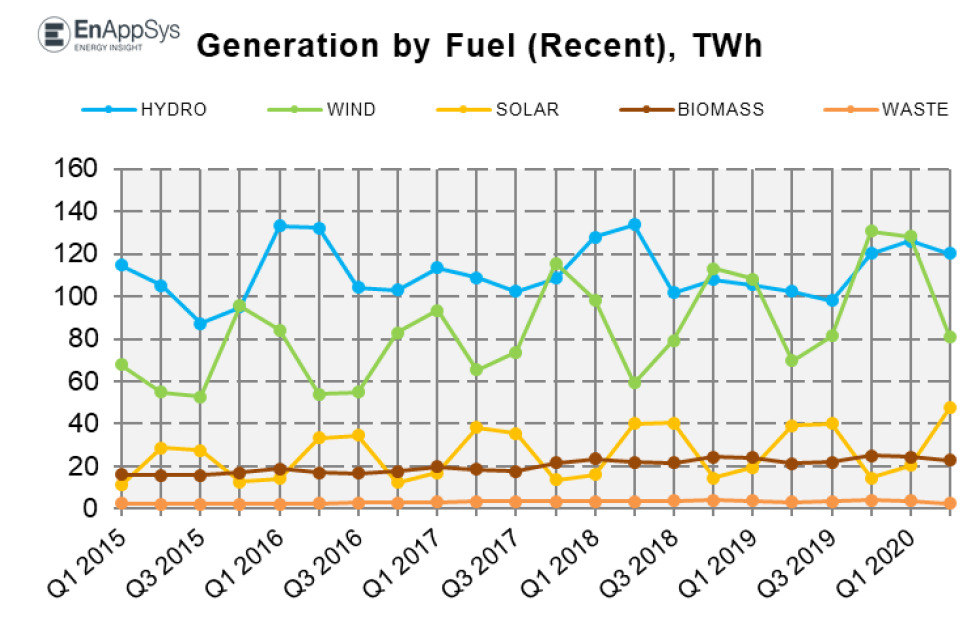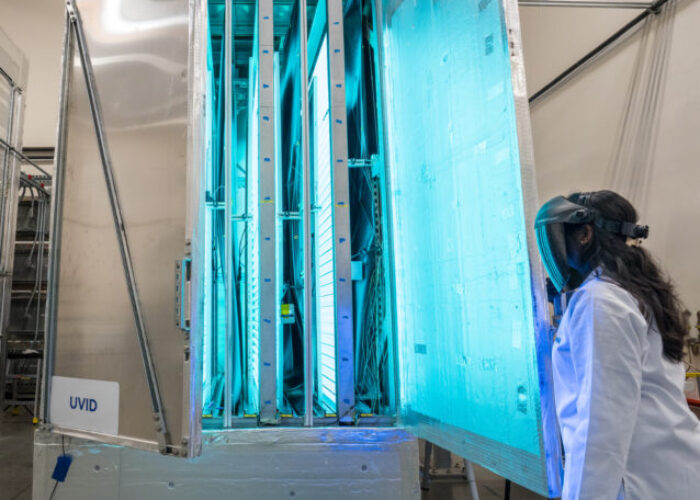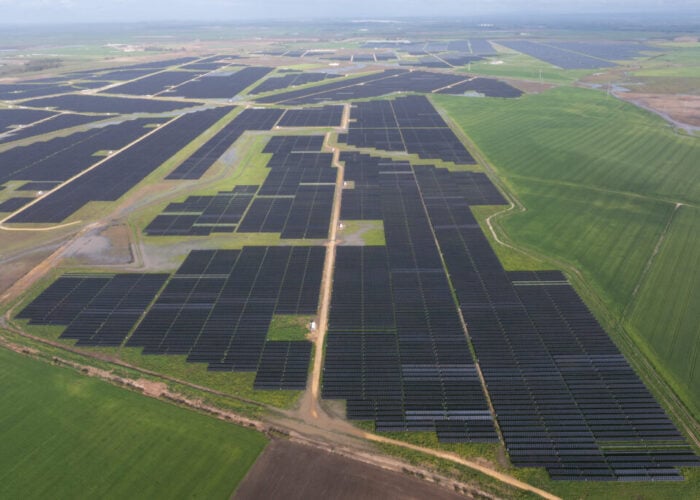
Generation from Europe’s solar PV fleet hit an all-time high in Q2 2020, according to analysis compiled by EnAppSys.
Driven by a collapse in power demand associated with the COVID-19 pandemic and ideal weather conditions, European solar generated around 47.6TWh throughout the three months ended 30 June. That figure is a 19% jump on the previous record of 40.6TWh set in Q3 2018.
Try Premium for just $1
- Full premium access for the first month at only $1
- Converts to an annual rate after 30 days unless cancelled
- Cancel anytime during the trial period
Premium Benefits
- Expert industry analysis and interviews
- Digital access to PV Tech Power journal
- Exclusive event discounts
Or get the full Premium subscription right away
Or continue reading this article for free
Those generation figures helped renewables take a 45% share of the total electricity mix, equating to the largest share of any asset class.
And the difference between solar and fossil fuel incumbents could not be starker. While solar reached new heights, fossil fuel generators witnessed their lowest quarterly generation for nearly five years. By comparison, fossil fuels provided just under one-third (31%) of total power in Europe in Q2 2020, while nuclear provided 25%.
At 47.6TWh, European solar’s output in Q2 2020 is nearly 22% greater than the 39.1TWh it produced in Q2 2019 and 18.7% greater than the 40.1TWh it produced in 2018. It is also the highest percentage share of total power generation recorded to date at 7.8%. The closest equivalent share for solar was 6.3% recorded in Q2 last year.

While generation conditions in Europe, as was noted by stakeholders at the time, were favourable for solar, the impact of COVID-19 and associated lockdowns has also been highlighted by EnAppSys.
National lockdown measures, while enforced in March, remained in place for much of Q2, triggering a slump in power demand. The quarterly average power demand in the second quarter fell by 13% from 345GW to 298GW, far greater than any decrease associated with seasonality, EnAppSys said.
“By the end of the quarter, overall demand levels seemed to have stabilised after the initial drop. While demand was generally lower than historical levels, the differences became comparable in magnitude with the range of normal year-to-year variations, and the lockdown effects became less clear,” Jean-Paul Harreman, director at EnAppSys BV, said.






